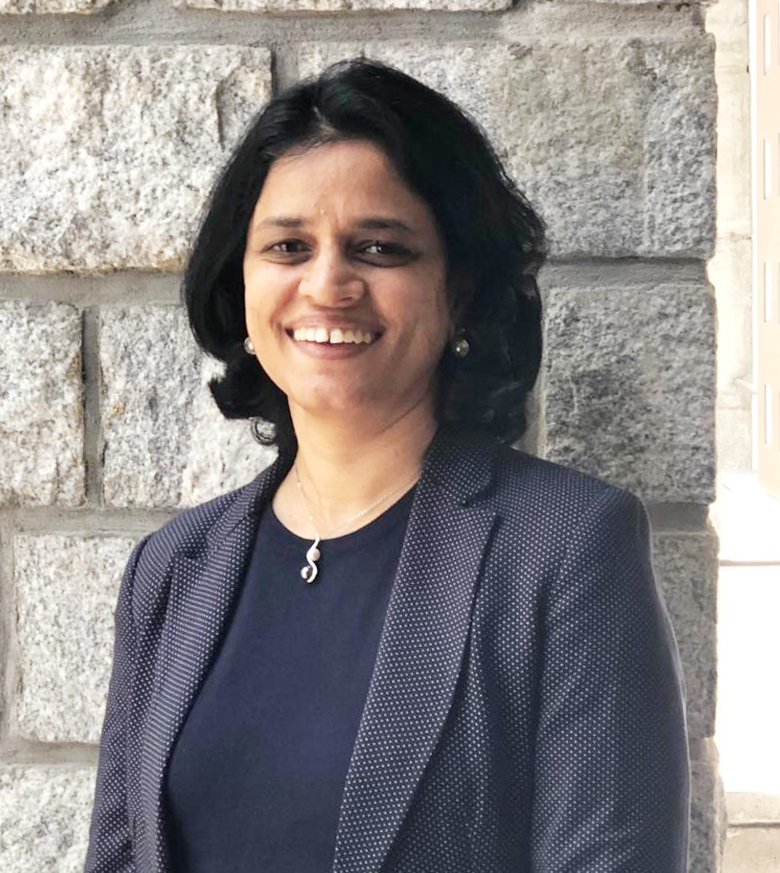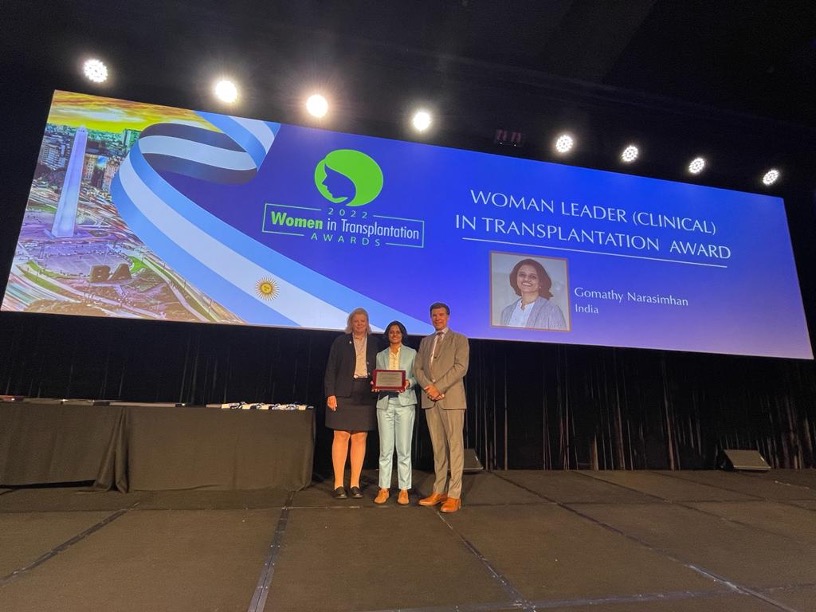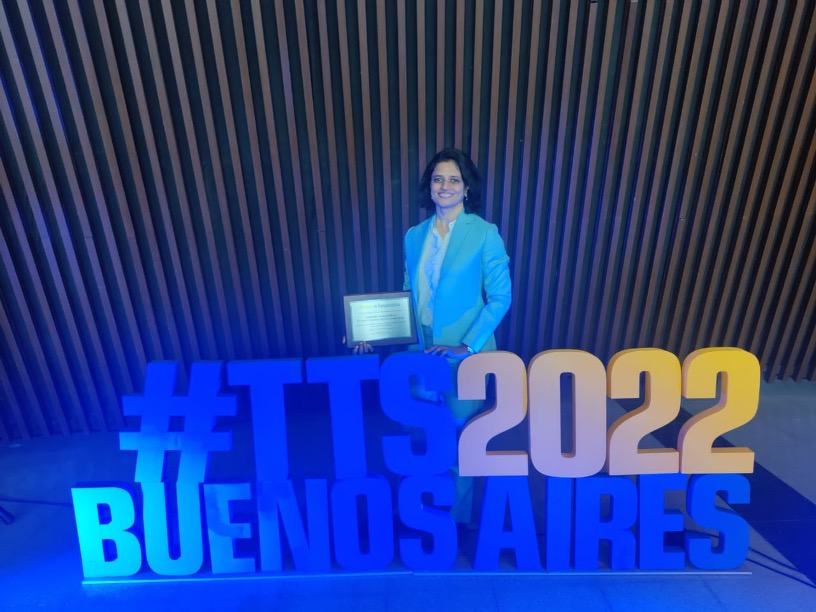An alumna of the General Management Programme for Healthcare Executives (GMHE), an Executive Education Programme at IIM Bangalore, Dr. Gomathy Narasimhan is a liver and kidney transplant surgeon. She was recently conferred the ‘Woman Leader in Transplantation Award’, a prestigious international award presented by The Transplantation Society. In this first-person account, India’s first woman multi-organ transplant surgeon shares with her fascinating journey
A recent alumna of the General Management Programme for Healthcare Executives (GMHE), an Executive Education Programme at IIM Bangalore, Dr. Gomathy Narasimhan is a liver and kidney transplant surgeon. She completed her surgical training at Madras Medical College, India. She then got her multi-organ transplant training from Baylor University, Dallas, Texas, under the guidance of Dr. Goran Klintmalm, and her living donor liver transplant training from Professor Inomata at Kumamoto University, Japan. She has years of experience in liver and kidney transplant surgery and has managed over 2500 liver transplants and 1000 kidney transplant patients.
Dr.Gomathy Narasimhan was recently conferred the ‘Woman Leader in Transplantation Award’, a prestigious international award presented by The Transplantation Society.

In this first-person account, Dr Gomathy Narasimhan, who has many firsts to her credit, talks about not just the milestones in her illustrious career but also the reasons why she chose to come back to school – business school actually, and what her key takeaways are from the GMHE offered by the Executive Education Programmes at IIM Bangalore.
Edited excerpts:
Engineering’s Loss is Medicine’s Gain
I started off not wanting to be a doctor, honestly! I wanted to be an engineer, an architect, really. I have an elder sister who’s a year-and-a-half older to me. She was very keen on becoming a doctor and she went on to do her medicine. I simply followed suit, reading up whatever she did and doing the same things she did! We were a bunch of friends and all of us looked up to my sister. I ended up getting admission into both engineering and medicine as far as my marks went. The interview for the medical exam came first! My parents said, ‘Go ahead and take the interview’. Subsequently, the interview for engineering came and I told them, ‘This is actually what I want to do!’ But, everybody kind of ridiculed me and said, ‘What’s wrong with you? You have got into medical school, and you want to do engineering?!’ With that, my engineering dreams came to an end! Or, did they? The reason I am saying this is because I chose surgery and surgery is like engineering – it is doing things as opposed to being a physician.

When I finished MBBS, my inclination was more towards surgery and I worked in a hospital, in 1997, where the corporate culture was in its early days. There used to be nursing homes, but here was hospital that was run by doctors who had all trained abroad – in the USA. There was full-time practice here – a very new concept in India. One of these doctors had completed his fellowship in liver transplant and had returned. Now, that was something absolutely fascinating for somebody who had just finished MBBS! I could never even comprehend what he was talking about. I just knew that it was something very fascinating because in India there was only kidney transplant at that time. Liver transplant was very new. In my mind, I knew that I wanted to do something new and different, so I went on to do my surgical residency. I went back to work with him as a junior surgeon.
I went to the US to do transplant training because in those days liver transplant was in its very early days here in India. There was no training program here whereas the US had a very structured fellowship program.
From None to Nearly Number One
The scene in India, I must say, has changed dramatically and phenomenally. The first successful liver transplant in India was done in 1998. The next 10 years saw small numbers for the whole country – with more failures than successes but from 2006 onwards, things started looking up. Now, we are probably the second largest in the world in terms of numbers that we do for liver transplantation. In the last 15-16 years, there has been a phenomenal growth both in terms of quantity and quality. As a result, there are many training programs, now in India. I have been with Professor Mohamed Rela, who is the doyen of liver transplant surgeons, since 2009. In 2011, we started a university-approved fellowship program, which is the first in the country. Now, I really do not see a reason for people to travel abroad to train. In fact, we have international trainees come here to us to learn liver transplant.
When the Journey is More Than the Destination
I always feel it is good for people to travel. It opens up your mind in several ways to look at different systems in different countries. Transplant, especially cadaver transplant, is a field where there is a lot of inter-connection between the patient, the medical fraternity and society. You need to understand the dynamics of how each system evolves, and for that travel goes a long way. The bottom line, which is the ethics of transplant, is the same everywhere. But how countries evolve is different. For example, where India was in 2006 is where Sri Lanka is at today. When you go to the US or the UK, you see what has happened in 50 years. So, you have a road map that is very useful.

I always look back at my time in the US as time spent in the army, where you forget everything else but the task on hand! As a fellow, especially in transplant surgery, there is no time for anything else. In the US, it was always emergency transplant – what we do from brain-dead people. What we do in India is predominantly live donor transplant, where a family member donates a part of the liver. It is, therefore, a planned surgery, in India, as opposed to deceased donor/ brain-dead donor/ emergency transplant in the US. So, there, we had no concept of day/ night or weekends. You are working all the time, but it was totally worth it. Those two years were a great experience. It prepares you to take on any challenge that life sends your way. What we put in during our training years proves immensely valuable all through our careers.
Many Firsts & More to Come
I trained at Dallas (Baylor University), where they had a very interesting way of recognising your first independent transplant. They have an award called ‘I Did It!’ The attending senior surgeon will mail the rest of the surgical team about your first independent transplant. Then, they host a special dinner at the end of which you are presented with the ‘I Did It!’ plaque. They make it all so special and memorable. Of course, it is a fantastic moment when you realize that you are the primary surgeon. But how they recognise and acknowledge your effort is truly special.
If I compare my fellowship training to time spent in the army, then my fellowship director Dr Edmund Sanchez — a tough, demanding person – was certainly my commander! I learnt a lot from him. He made me realise that the difference between good and great lies in attention to detail. I remember mailing my husband right away, after completing my first independent transplant which had begun late at night and went on for the next 7-8 hours, that I had done it!
By the way, I was the first woman to do the fellowship program which had started 22 years before in Baylor University, and the first Indian to do the program. I am the first multi-organ transplant woman surgeon in India. But these firsts are not things that drive you! The firsts happen incidentally! You don’t know this when you are actually doing it all.
East meets West
When I trained, the brain-dead donor transplant was the only way in the US whereas in India, there wasn’t yet this system. In the west, they follow the cadaver donor system while in the East (Korea, Japan etc), it is the live donor model because their cultures do not allow cadaver transplant. In India, we are in the middle. Our numbers are high for live donor transplants because cadaver transplants are very sparse. Tamil Nadu and South India are doing well in cadaver transplants but North India is growing slowly. The requirement is huge and the number of brain-dead donors will never be able to meet this requirement. Almost 90 per cent of the transplants in India come from live donors. Therefore, in India, you should be able to do both transplants. A couple of my co-fellows in the program in the US were from Japan and they had returned to Japan to work. I got the opportunity to work with them and pick up on live donor transplant skills. It was interesting because culture, people, language – all of it was different.
I must tell you an interesting anecdote to share at this point. When I started my fellowship in the US, these two Japanese surgeons who were senior to me in the program by six months, reportedly went to the fellowship director and complained that “the woman who has come from India is way too aggressive”! I actually wasn’t being aggressive – I was just getting used to the American system! That apart, the fellowship director is supposed to have told them that my aggression meant that I would stay to complete the program and fight it out with the guys. “Here is a keeper,” he said to them.
Back to School, but now B-school
Why did I choose to enrol for the General Management Programme for Healthcare Executives (GMHE) program at IIM Bangalore? Well, my penchant to be among engineers must be pretty strong! Jokes apart, I always enjoyed taking up administrative leadership roles. In 2018, a group of us doctors moved to a new multi-speciality hospital under the leadership of Professor Rela, and a few of us who had worked with Professor Rela for a while decided to take up leadership roles in this new hospital. That’s why I thought I needed to train, in business and management, in a formal way. I have been a clinician all my life. But to be on the business and administrative side, one needs a formal and structured training program. IIMB helped me live my dream. When you are in clinical practice for some years and then take up a program like the GMHE your understanding is different as opposed to someone who comes straight from med school. You are able to look at both sides of the coin. After the GMHE, when I took up the role of head of the Medical Advisory Board, I knew when a clinician came to me with a problem, I could understand where they came from, and at the same time, I was able to give them the management perspective in a way in which they could understand and accept. As clinicians, we always have this feeling that the management never understands our point of view.
In fact, I believe all med school curriculums should include business economics and management. Think about it. When a batch of doctors graduates in India, at least 60 per cent of the batch is going to be running nursing homes and clinics in their home towns, which makes them entrepreneurs. And where better to learn the fundamentals of business and management than in med school?
The best part of the IIMB program was the very interesting mix of fellow participants. We had very young people with fresh ideas and people like deans of med colleges. That mix ensured that the program was never monotonous. The design of the program was very fascinating – we were new to the case study method; we only knew medical case histories! Strategy, Finance, Law were exciting subjects and the feeling of being back in school was just amazing. The most enjoyable perk though was a run in the beautiful campus every now and then, something I am passionate about.
Old world yet, in some precious ways
While I am not a big fan of social media, I realise that one can create content that has substance to appeal to a new audience especially when it comes to popularizing organ donation. Marketing in the healthcare space is a bit frightening because everyone is throwing superlatives around! Everyone claims to be cutting edge; everyone claims to be the best! We need to be sensitive and accurate in our communication on any platform and, especially, when it involves sensitive areas like healthcare.
Research, Publication, Practice & Administration: All in a Day’s Work
I should thank the institution that I work and my peer group I am in for my research and publication. They are my driving force. I focus on a few areas of writing – transplants and organ donation in India because this is my passion. I have been a part of the deceased donor program in Tamil Nadu ever since its conception. I think we have a long way to go here. There is a huge need to do more and there is scope to do so much work in this area of organ donation. Tamil Nadu is very proactive in rolling out initiatives in this space, and the same can be translated to other states in the country.
I would really like to also focus on why so many people need transplants which leads to lifestyle-associated diseases. We operate on people and find that five years down the line, they cause harm to their new liver once again because they have lapsed into the same faulty lifestyle! This cycle must be broken.
Children with obesity and diabetes, young adults with diabetes….the numbers are growing alarmingly. As far as the liver is concerned, it is called fatty liver disease. Now, it is so common that when it shows up in people’s ultra sound reports, the physician dismisses it or worse, normalizes it, saying ‘It’s okay; everybody has it!’ No, it is not okay. Just because everyone has it, It does not make it okay. We must stop normalizing it. This needs plenty of awareness and advocacy.
I also see cases where when we screen live donors who are usually the 20-22 year old children of our patients, we find a good proportion of these young adults have an unhealthy liver! In normal circumstances, they would never know they have an unhealthy liver because they go through life, at that age, without any tests. It is only when they come for screening that we catch sight of the problem. All we need to do is to put them on a lifestyle plan and in 4-6 weeks the fat is gone. This is an intervention that can yield results if caught early. But imagine if they go through life for the next 10-15 years blissfully unaware! We must wake up to this alarming situation.
(As told to Kavitha Kumar)
